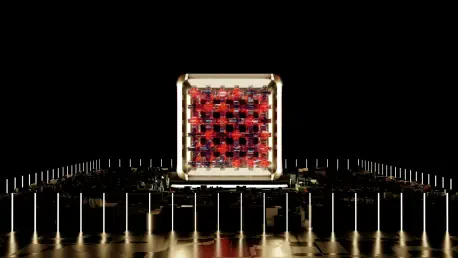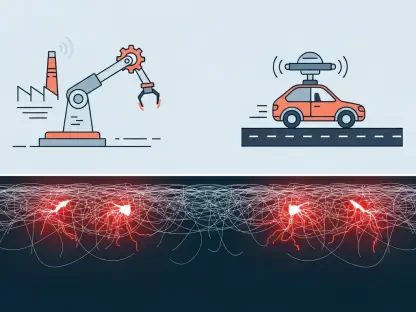Intel’s strategic decision to spin off its Network and Edge Group (NEX) into a standalone entity marks a pivotal moment in its corporate evolution, reflecting a keen focus on AI-driven growth opportunities. Under the leadership of CEO Lip-Bu Tan, who took the helm in early 2025, this move is not just a corporate restructuring but a strategic recalibration aimed at unlocking value in highly dynamic technology sectors, particularly artificial intelligence (AI) and networking infrastructure. This venture allows Intel to position itself closer to emerging high-growth segments while simultaneously offering new investment avenues for shareholders. With these changes, Intel is poised to redefine its operational reach as it harnesses its core competencies to adapt to shifts within the technology landscape.
Strategic Shift Towards AI and Networking
Intel’s motivation for spinning off the NEX group arises from an introspective evaluation of its core capabilities amid rising competition in the AI and networking realms. Traditionally known for its dominance in PC and data center chip markets, Intel has recognized the transformative impact of AI technologies and complex global networking systems on its operations. The separation of NEX enables Intel to allocate resources more efficiently and hone in on strengths, particularly in high-performance computing and AI-enhanced data center solutions. This strategic pivot aligns with previous actions, such as Intel’s divestiture of its Altera unit in 2024, a move that generated significant capital while maintaining a stake for stability.
This spin-off signifies Intel’s intent to harness opportunities within AI and cloud computing domains. The reassignment of NEX assets into Intel’s Client Computing Group (CCG) and Data Center and AI (DCAI) divisions, starting from the first quarter of 2025, underscores a transformative shift in Intel’s operational and financial trajectory. While the CCG segment experienced a 3% revenue decline in the second quarter of 2025, the DCAI segment registered a growth of 4%, showcasing Intel’s strategic focus on higher-margin sectors. As Intel progresses with this transition, it faces immediate challenges such as restructuring expenses totaling $1.9 billion in the second quarter of 2025 due to workforce adjustments and operational realignments.
Financial Implications and Challenges
The financial implications of the NEX spin-off highlight Intel’s strategy to weigh short-term costs against long-term gains. In an effort to optimize costs, Intel is redeploying its global manufacturing operations by halting certain projects in locations such as Germany and Poland, while consolidating efforts in Asia for better margins and operational efficiency. Intel’s restructuring expenses, primarily from workforce streamlining, and significant shifts in manufacturing, reflect its aggressive push toward its strategic goals, despite facing immediate financial pressures.
The spin-off also introduces the NEX group as a powerful player in networking infrastructure, with a reported revenue of $5.8 billion in 2024, showcasing its solid financial foundation. As an independent entity, NEX can fast-track innovations in areas such as silicon solutions for 5G networks, enterprise networking, and AI-driven data center interconnects. These segments are poised for substantial growth given the soaring demand for such solutions. The creation of NEX presents compelling investment prospects, enabling the group to form partnerships, raise capital, and scale operations effectively, with Intel retaining a role as an anchor investor to ensure stability.
Positioning for AI Revolution and Future Opportunities
At the heart of Intel’s strategic realignment is the AI revolution, an inexhaustible driver of high-speed connectivity demand, propelling the expansion of networking infrastructure. NEX’s focus on Ethernet and silicon solutions strategically positions it to capitalize on these transformative trends. Enterprises and cloud providers are swiftly upgrading infrastructure to accommodate AI-driven workloads, providing NEX with significant market momentum. The network group’s independent operations promise to leverage its expertise, enveloping emerging industry dynamics.
Conversely, Intel, in its concentrated form, is strategically placed to exploit opportunities from the AI boom. The recent 4% growth in the DCAI segment emphasizes the potential of AI-centric data center chips as lucrative profit centers. Under CEO Tan, Intel’s approach prioritizes research and development, alongside operational efficiency, as it strives to reclaim its leadership stature within high-performance computing. However, the transition is not without risks, with investors urged to remain mindful of potential challenges such as the competitive landscape in networking, restructuring costs, and Intel’s debt profile, all requiring careful management.
Conclusion: Navigating Transformation in a Dynamic Era
Intel’s decision to spin off its NEX group stems from a deep evaluation of its core strengths amidst growing competition in AI and networking fields. Traditionally dominant in PC and data center chip markets, Intel has acknowledged the transformative power of AI technologies and complex global networking systems. By separating NEX, Intel can distribute resources more efficiently, focusing on high-performance computing and AI-enhanced data center solutions. This move aligns with past strategies, such as selling its Altera unit in 2024, raising significant funds while keeping a stake for stability.
The spin-off highlights Intel’s aim to seize opportunities in AI and cloud computing sectors. Reassigning NEX assets to Intel’s Client Computing Group (CCG) and Data Center and AI (DCAI) divisions from the first quarter of 2025 marks a shift in Intel’s operational and financial path. Even as CCG saw a 3% revenue dip in Q2 of 2025, DCAI grew by 4%, emphasizing a focus on higher-margin areas. As Intel navigates this transition, it faces challenges like $1.9 billion in restructuring costs due to workforce changes and operational realignments in 2025.









